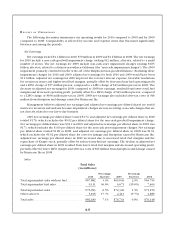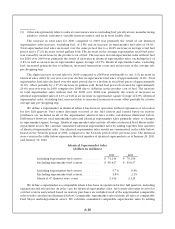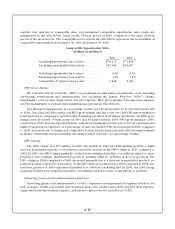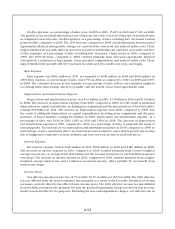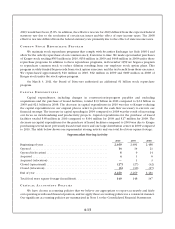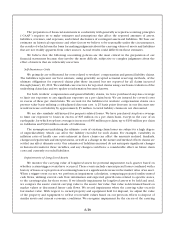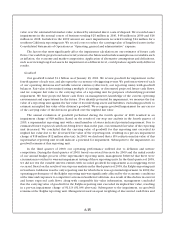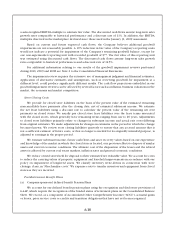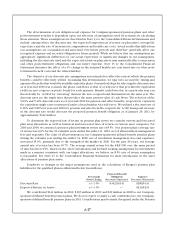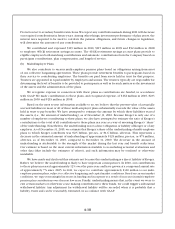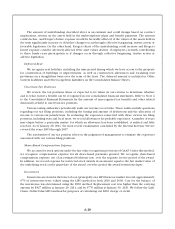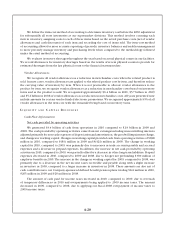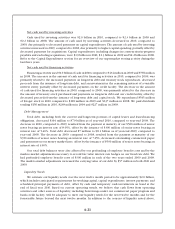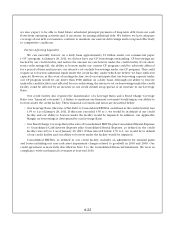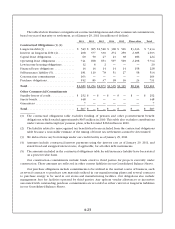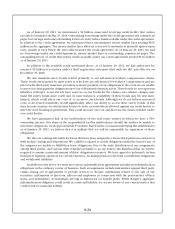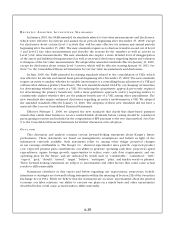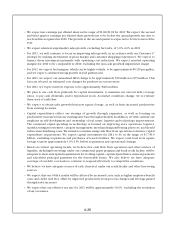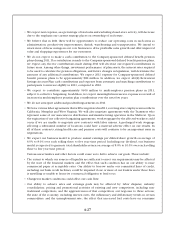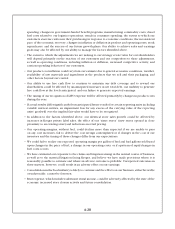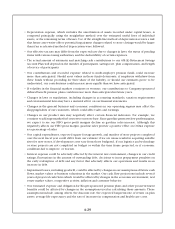Kroger 2010 Annual Report Download - page 99
Download and view the complete annual report
Please find page 99 of the 2010 Kroger annual report below. You can navigate through the pages in the report by either clicking on the pages listed below, or by using the keyword search tool below to find specific information within the annual report.
A-19
The amount of underfunding described above is an estimate and could change based on contract
negotiations, returns on the assets held in the multi-employer plans and benefit payments. The amount
could decline, and Kroger’s future expense would be favorably affected, if the values of the assets held in
the trust significantly increase or if further changes occur through collective bargaining, trustee action or
favorable legislation. On the other hand, Kroger’s share of the underfunding could increase and Kroger’s
future expense could be adversely affected if the asset values decline, if employers currently contributing
to these funds cease participation or if changes occur through collective bargaining, trustee action or
adverse legislation.
Deferred Rent
We recognize rent holidays, including the time period during which we have access to the property
for construction of buildings or improvements, as well as construction allowances and escalating rent
provisions on a straight-line basis over the term of the lease. The deferred amount is included in Other
Current Liabilities and Other Long-Term Liabilities on the Consolidated Balance Sheets.
Uncertain Tax Positions
We review the tax positions taken or expected to be taken on tax returns to determine whether
and to what extent a benefit can be recognized in our consolidated financial statements. Refer to Note 4
to the Consolidated Financial Statements for the amount of unrecognized tax benefits and other related
disclosures related to uncertain tax positions.
Various taxing authorities periodically audit our income tax returns. These audits include questions
regarding our tax filing positions, including the timing and amount of deductions and the allocation of
income to various tax jurisdictions. In evaluating the exposures connected with these various tax filing
positions, including state and local taxes, we record allowances for probable exposures. A number of years
may elapse before a particular matter, for which an allowance has been established, is audited and fully
resolved. As of January 29, 2011, the most recent examination concluded by the Internal Revenue Service
covered the years 2005 through 2007.
The assessment of our tax position relies on the judgment of management to estimate the exposures
associated with our various filing positions.
Share-Based Compensation Expense
We account for stock options under the fair value recognition provisions of GAAP. Under this method,
we recognize compensation expense for all share-based payments granted. We recognize share-based
compensation expense, net of an estimated forfeiture rate, over the requisite service period of the award.
In addition, we record expense for restricted stock awards in an amount equal to the fair market value of
the underlying stock on the grant date of the award, over the period the award restrictions lapse.
Inventories
Inventories are stated at the lower of cost (principally on a LIFO basis) or market. In total, approximately
97% of inventories were valued using the LIFO method in both 2010 and 2009. Cost for the balance of
the inventories was determined using the FIFO method. Replacement cost was higher than the carrying
amount by $827 million at January 29, 2011, and by $770 million at January 30, 2010. We follow the Link-
Chain, Dollar-Value LIFO method for purposes of calculating our LIFO charge or credit.


